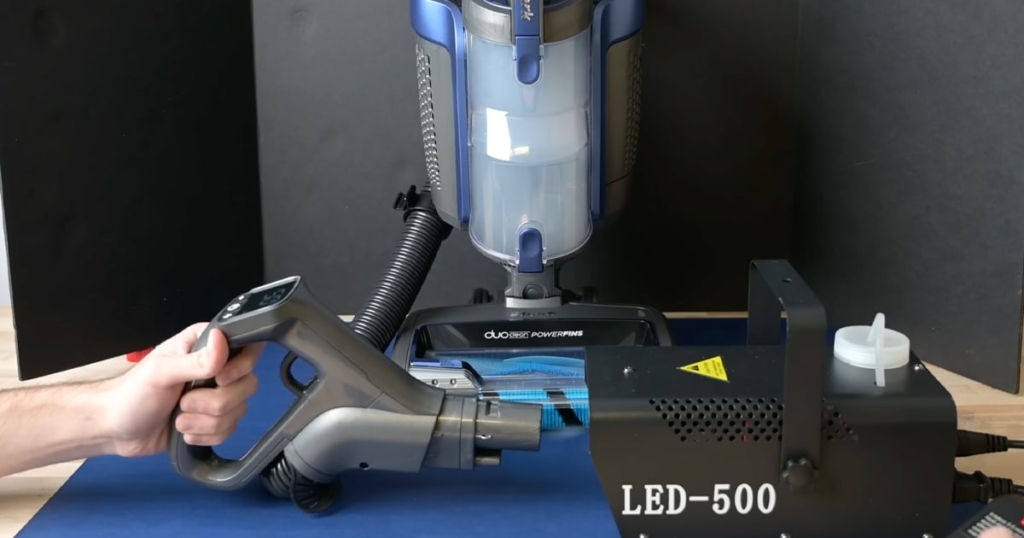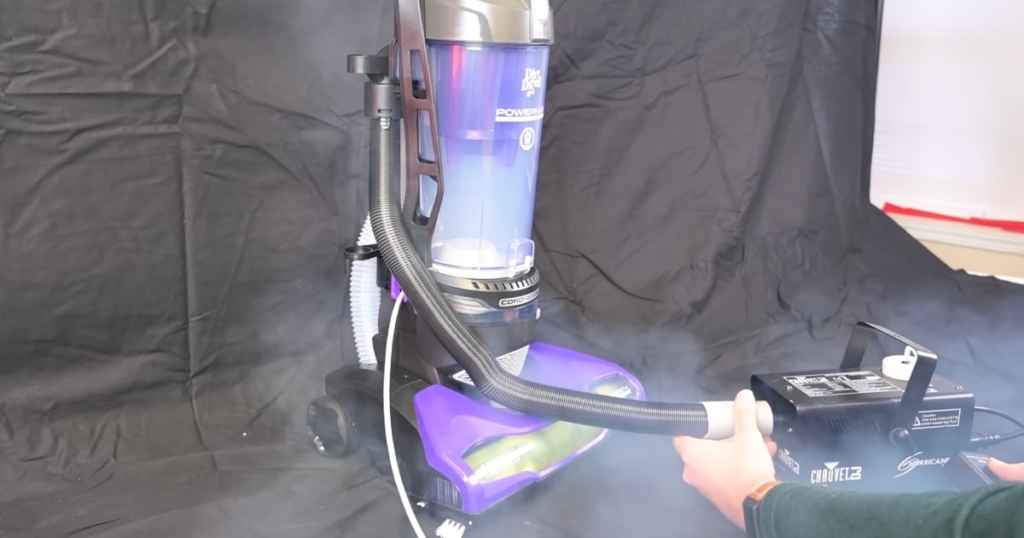Talk about vacuum cleaner features usually revolves around two topics: suction power and attachments. Today, we’re going to talk about something we think is just as important, but often overlooked. These are two essential features that can make a world of difference in your home’s cleanliness and air quality: a fully sealed system (often called an anti-allergen system) and HEPA filtration.

If you watch our vacuum cleaner reviews on YouTube, you’ve likely heard us talk about these topics before. We definitely think it is important. But, like many things that go unseen, it often isn’t front of mind when choosing a vacuum. We planned this article around HEPA filters, but having a well sealed vacuum is just as important.
Understanding a Sealed Vacuum System
A sealed system in a vacuum cleaner might sound complicated. But, the concept is pretty straightforward. It’s all about how the vacuum handles the air it sucks in. In a sealed system, all air drawn into the vacuum is forced through the entire filtration process before being exhausted back into your home. No unfiltered air can leak out from gaps or cracks in the vacuum’s body.
Why does this matter? In a non-sealed vacuum, tiny particles of dust, allergens, and dirt can escape back into your room. Not ideal, right? With a sealed system, you’re ensuring that only clean, filtered air is released.
Upright vacuum shopping? See the 4 Common Mistakes Upright Vacuum Shoppers Make. Hint: One is purchasing an upright without a HEPA filter and sealed system.
The Significance of HEPA Filtration
Now let’s talk about HEPA filtration. HEPA stands for High-Efficiency Particulate Air. It’s a standard that requires the filter to capture 99.97% of particles as small as 0.3 microns. To put that into perspective, a single strand of human hair is about 50 to 75 microns wide!

HEPA filters are a game-changer when it comes to improving indoor air quality. If you’ve shopped for an air purifier you’ve seen the term and what the benefits are already. HEPA filters trap fine particles that other filters may miss including certain allergens, pollen, and dust mites. If you suffer from allergies or have pets at home, a HEPA filter can be a real lifesaver.
Indoor air quality
Isn’t indoor air quality good? Surprisingly, it’s often far worse than outside air! A study conducted by the U.S. Environmental Protection Agency (EPA) found that indoor air can be two to five times more polluted than outdoor air. In some extreme cases, indoor air was found to be a staggering 100 times more polluted.
A number of factors contribute to poor indoor air quality. The EPA study cited inadequate ventilation, indoor pollution sources, such as tobacco smoke, building materials, and cleaning products, and outdoor air pollutants entering the home or building.
These studies highlight the importance of being mindful of indoor air quality and taking necessary steps, such as using air purifiers, maintaining proper ventilation, and choosing low-emission products, to reduce indoor air pollution and maintain a healthy living environment.
So, why is this mentioned in an article about vacuum cleaners? A vacuum cleaner can play a role here, too.
When vacuuming, the goal is to keep the vacuumed-up debris in the vacuum’s bag or filter. Vacuums with poor seals and low-grade filters expel dust, irritants, and microscopic particles back into the air. When a vacuum exhausts fine particles back into a room you cannot see it. If it were visible, a well-sealed vacuum with HEPA filtration would be standard across the board. Unfortunately, that’s not the case today.
A vacuum with a sealed-system vacuum has an airtight housing, which prevents dust and allergens from leaking back into a room through seams in the vacuum’s housing. Without it, even vacuums with HEPA filters can be ineffective as fine particles and irritants can escape the vacuum as they move through it.
A Sealed System Plus HEPA Filtration
When you combine a sealed system with HEPA filtration, you’re getting the best of both worlds. This powerful duo ensures that the tiny particles the HEPA filter traps don’t get a chance to escape back into your home.
RELATED: Looking for a vacuum with both these features? Try the Shark Vertex Pro Cordless or any of the Shark Upright vacuums we recommend.
Here’s an interesting fact: some vacuums claim to have HEPA filters but don’t mention whether they have a sealed system. Without a sealed system, a HEPA filter’s efficiency can be significantly as it allows fine particles to escape the vacuum and return to the air. It’s like having an elite goalie, but the net has holes in it!
Are there any downsides?
Everything has a price. And, price is actually the one real downside of a vacuum with HEPA filtration and a sealed system. That cost is logical. A sealed system requires more precise engineering. And, HEPA filters are more expensive than non-HEPA filters.
Considering a Vacuum with Sealed System and HEPA Filtration
So, should you consider these features in your next vacuum purchase? If you ask us, yes, you should. Does a vacuum need to have a HEPA filter or sealed system? No, it doesn’t need either to function. But, with all else being equal, we believe it’s worth it. It’s not just about having a clean floor; it’s about having cleaner air in your home.
Investing in a vacuum with a sealed system and HEPA filtration can provide long-term benefits, especially for those with allergies or respiratory issues. Plus, if you have pets, these features can help minimize pet dander and hair around your home.
Conclusion
There you have it! If you didn’t before, you now know why we’ve always been so diligent at testing how well vacuums are sealed and what types of filters they have. It really does make an impact on the cleanliness of your home and the quality of your indoor air. It’s a testament to how far vacuum technology has come, and how a simple household appliance can contribute to healthier living. So, when you’re shopping for your next vacuum, remember to check for these two features. Your lungs will thank you!
Frequently asked questions
A vacuum with a sealed-system vacuum has an airtight housing, which prevents dust and allergens from leaking back into a room through seams in the vacuum’s housing. Without it, even vacuums with HEPA filters can be ineffective as fine particles and irritants can escape the vacuum as they move through it.
This really comes down to the manufacturer and the vacuum itself. If you can’t find your manual or documentation on your vacuum, changing your HEPA filter every 6 months should suffice. When you order your replacement filter, check to see if it recommends a maintenance schedule.
There is a bit of a gray area here. Generally speaking, a vacuum with a HEPA filter is exactly what it sounds like: a vacuum cleaner which has a HEPA filter incorporated into its design. This could be an upright, cordless, robot or any other kind of vacuum cleaner.
The term HEPA vacuum could be one of two things. First, it could be exactly what we have already described: a vacuum that incorporates a HEPA filter. Second, it is also used to describe a specialized vacuum used in remediation and restoration type work.
